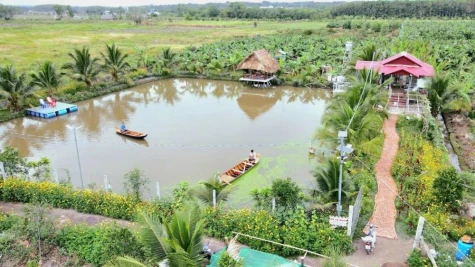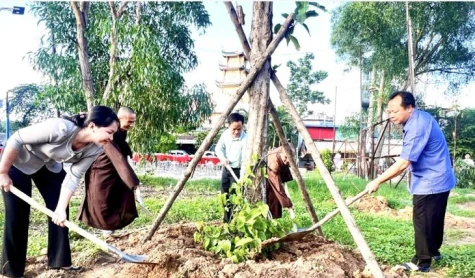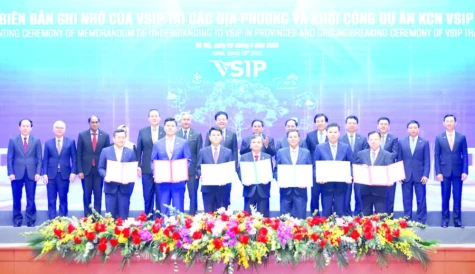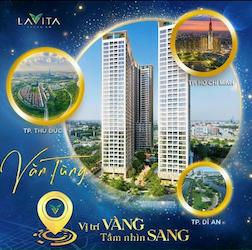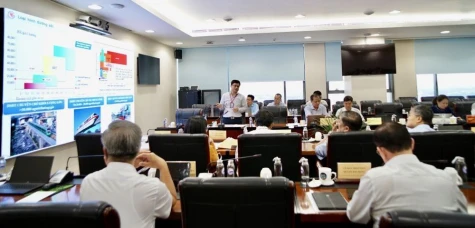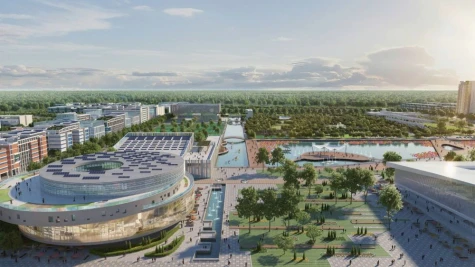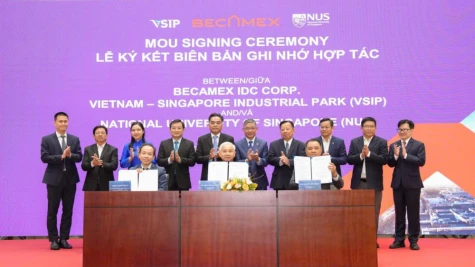The National Target Program for New Rural Development is a pivotal initiative that Binh Duong has steadfastly directed and executed in recent times. With robust and coordinated involvement from the entire political system and active engagement from the community, it has fostered significant transformations in rural areas across the province.

Enhance the quality of life for individuals
To date, the province has achieved 38 out of 38 communes that meet advanced new rural standards, including 4 communes that have attained model new rural standards. Additionally, 3 out of 6 districts and cities have fulfilled new rural standards and completed the requisite criteria. Notably, the communes that have achieved advanced and model new rural standards in 2024 are predominantly located in remote areas, which, despite starting from a low baseline, have made significant efforts to reach their goals ahead of schedule. These communes not only prioritize production development but also adopt models in culture, education, and digital transformation, aligning with the objective of integrating digital technology into new rural construction to enhance economic development and reduce the disparity between rural and urban areas.
Phu An Commune (Ben Cat City) has successfully established itself as a model new rural commune, infusing vitality into this rural region. Within the commune, numerous infrastructure projects have left a significant imprint on the community, as residents contributed land, financial resources, and efforts to collaborate with local authorities in the development of a new rural area. As a senior member of the community, Ms. Duong Thi Tan from Ben Giang Hamlet reflected on the evolution of the commune over the years, expressing pride in the transformations of her hometown. "Phu An Commune is deeply honored to have achieved the designation of a model new rural area in terms of cultural standards. The development of the new rural area has resulted in paved roads, with asphalt and concrete surfaces, and flowers adorning both sides, enhancing the countryside's charm. The residents' lives are increasingly prosperous, and there is a collective pride in the robust progress of our hometown," Ms. Duong Thi Tan remarked.
In addition to its industrial and agricultural production, Phu An commune is also dedicated to the development of eco-tourism and riverside tourism, primarily centered around fruit orchards, with cultural criteria serving as the foundation for innovation. The commune is planning designated areas for the construction of garden villas and eco-tourism facilities to create favorable conditions for investors to develop tourism-related structures and architecture. Concurrently, it supports households in cultivating garden eco-tourism and agricultural tourism. A notable example is the eco-tourism initiative at Anh Sau Miet Vuon restaurant, owned by Mr. Trinh Van Thong in An Thuan hamlet, which attracts numerous visitors seeking relaxation on weekends. This initiative also serves to promote the image of Phu An's new countryside to a wider audience.
Characterized by its hilly terrain and proximity to the river, Hieu Liem commune in Bac Tan Uyen district possesses advantageous conditions for agricultural development, particularly in the cultivation of citrus fruit trees. Agricultural production has yielded a stable income and enhanced the quality of life for the residents of the commune. This success also aligns with the criteria for the commune to achieve model new rural standards in the agricultural sector. Currently, the area dedicated to citrus fruit cultivation in the commune exceeds 1,300 hectares, with approximately 200 households engaged in citrus farming. Hieu Liem commune has thus emerged as a specialized region for citrus fruit production within the province.
Through the concerted efforts of localities in developing advanced new rural areas and exemplary rural communities, Binh Duong's rural regions have become increasingly innovative, dynamic, and vibrant. By the conclusion of 2024, the average income per capita in these rural areas is projected to approach 90 million VND per year. The new rural communes are evolving collectively, fostering civilization, innovation, and prosperity within the countryside.
Enhancing rural development
Recently, all levels, sectors, and localities within the province have made concerted efforts to implement the new rural construction program in alignment with the planning and socio-economic development strategy, while also integrating it with the urban development framework of the province, districts, and cities. Notably, the economic, technical, and social infrastructure in Binh Duong's rural areas has seen significant investment and rapid transformation. The rural landscape has evolved from dusty, muddy red gravel roads to well-paved asphalt and concrete thoroughfares, facilitating travel and commerce for both businesses and residents. The healthcare system, educational institutions, cultural facilities, sports amenities, and community activities have expanded, effectively addressing the needs of rural inhabitants. Numerous innovative and effective approaches have demonstrated their practical value, contributing to the momentum in the initiative to develop new rural areas within the province.
Mr. Pham Van Bong, Director of the Department of Agriculture and Environment, stated that the development of new rural areas is regarded as a task with a defined starting point but no definitive endpoint. In an effort to bridge the gap between rural and urban areas, Binh Duong has taken proactive and innovative steps in this initiative. To date, numerous rural infrastructure projects have been invested in, newly constructed, upgraded, and repaired, effectively addressing the production and living needs of the populace. Agricultural production models that incorporate advanced technology and organic practices have been expanded, significantly transforming the rural landscape and enhancing the material and spiritual well-being of rural residents.
According to the plan, by 2025, the new rural construction program will be implemented synchronously on a digital technology platform. It is anticipated that at least 90% of provincial-level work records, 80% of district-level records, and 60% of commune-level records will be processed online. Furthermore, all localities and units will utilize document management software and fulfill information, communication, and public administration indicators in accordance with the New Rural Criteria for the 2021-2025 period. In terms of digital economic development, the plan establishes a target that by 2025, at least 70% of communes in the province will adopt information technology in agriculture, trade, and services. Binh Duong will also pilot the establishment of 1-2 smart new rural commune models, aimed at fostering e-commerce, enhancing the quality of life for residents, and promoting sustainable rural economic development.
In the course of executing new rural construction initiatives, Binh Duong currently lacks significant investment capital for new rural projects. The allocation of funds for integrated rural development prioritizes investments in clean water, transportation, electricity, environmental protection, and cultural and educational facilities. In 2024, the province mobilized approximately 2,183 billion VND for the development of new rural projects, with over 1,256 billion VND sourced from the decentralized state budget. |
Reported Thoai Phuong - Thanh Tuyen - Translated by Vi Bao








